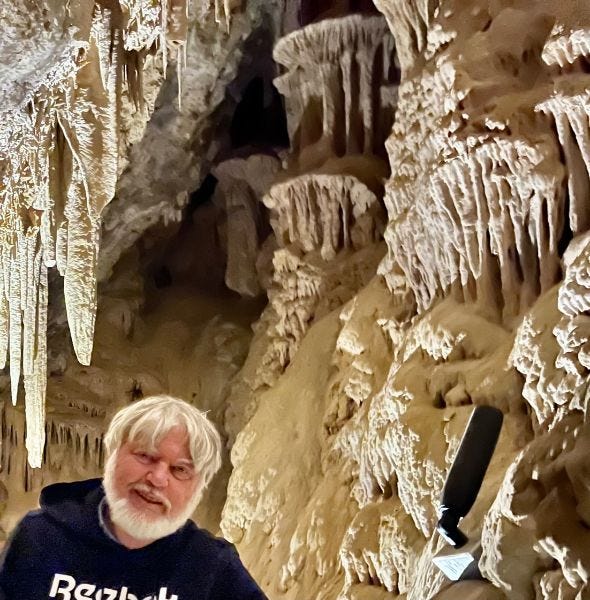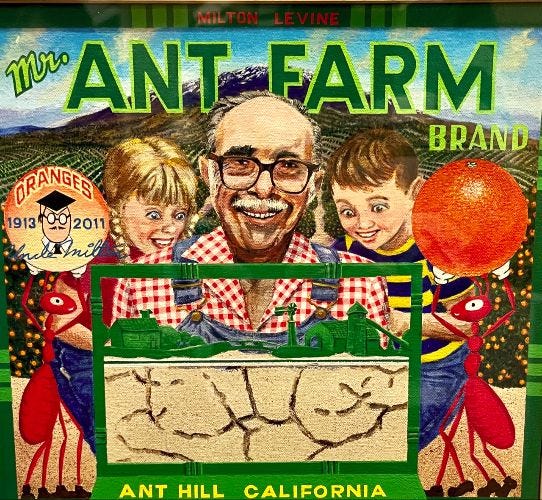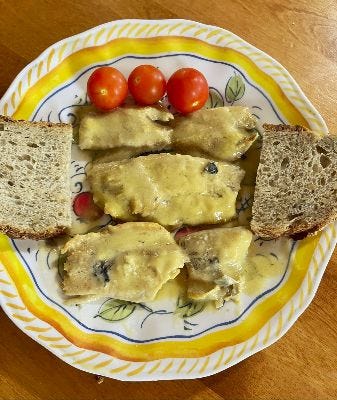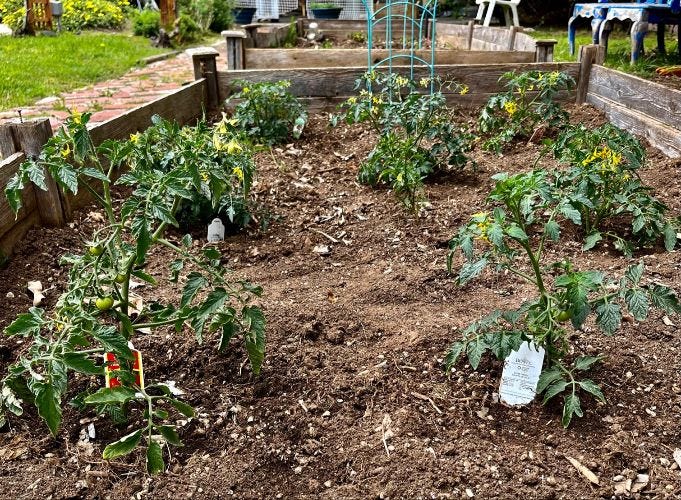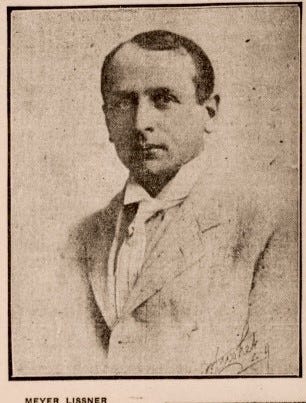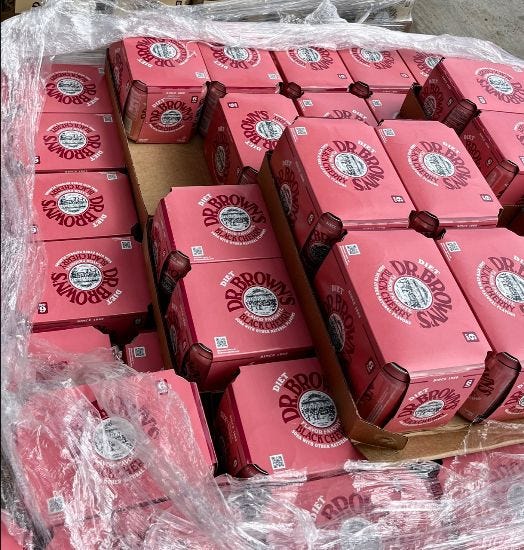A New Scroll of LA Jewish News
Folks,
In times like these you need to get away, and recently, a California cavern in the middle of the Mojave Desert made an excellent place to shelter from the growing political storm. While exploring the stalactites and stalagmites of Mitchell Caverns, I realized that the outside world was dropping away, and all I needed to focus on was the natural beauty, and where to put my feet. There is a blessing for when we see wonders of nature, and this was such a time. It was also a blessing to be deep inside, and away from the day-by-day drip of demoralizing news. When I emerged into sunlight, around two hours later, I felt refreshed, and ready for what that light could bring.
In the following weeks, I found that there were other times and ways, often unexpected, when I experienced an equilibrium-enhancing time-out from the political trauma. The moments were not about wearing too-dark shades, or putting on sound-canceling headphones. They were more about having my eyes opened, and stepping from the dark into sunlight. In this issue, I want to share these STEPS with you.
…A CALL to those readers who have yet to become paid subscribers, or who need to re-subscribe: If you want to read MegilLA, please continue your support. As a journalist, as your neighbor, I will be working to bring more light to the Jewish life around us. If you are reading, shouldn’t you be subscribing? Please SUBSCRIBE today.
Shabbat Shalom.
Edmon J. Rodman
////\/\\\\
////\/\\\\
Steps into Sunlight:
Instead of doomscrolling,
invent a scroll of your own
Art by Ben Sakoguchi
Edmon J. Rodman
Inspiration is hard to find these days, with sparks, especially Jewish ones, tough to find, even in the dark. Helping to light a path past repression and demoralization is a show titled “No Prior Art” at the LA Central Library’s Getty Gallery.
The show’s title, inspired by a patent office application term meaning unique and without precedent, serves as a gateway of introduction to a gallery of inventors including several Jewish ones, whose work exhibits a determined and sometimes mind-blowing spirit of creativity.
A trip to the show maybe just what the doctor ordered.
A 2018 World Health Organization report that surveyed the results from 3000 studies that looked at the relationship between the arts and health identified “a major role for the arts in the prevention of ill health, promotion of health, and management and treatment of illness across the lifespan.”
Displayed among more than a dozen artists and inventors, the visitor will find the work and stories of several creators including Mixografia, the LA multigenerational art studio founded by a Jewish family.
Established by Luis and Lea Remba in Mexico City in 1968, Mixografia invented and patented a unique three-dimensional print making process. The display shows the use of the process as a new work is created from start to finished print.
Another section of the show (closes May 11) features prints that mimic fruit crate labels by Pasadena-based painter Ben Sakoguchi, with each featuring a different inventor.
During a year when the value of minority Americans is being called into question, it’s important that Jewish inventors are included.
You will find Milton Levine (Uncle Milton) and his Ant Farm toy, and actress and inventor Hedy Lamarr (born Hedwig Eva Maria Kiesler), famous for her frequency- hopping design work used in Allied torpedoes. Ruth Handler, inventor of the Barbie doll in 1959, also helps bring this section to life.
Who knows, perhaps all this displayed creativity will inspire someone to create a channel changer that hops around the bad news, or a political lie detector.
////\/\\\\
Steps into Sunlight:
Eat with joy
Is there some food that brings you joy? That in the moment, makes you lose what’s eating you? For me, the food that gets me swimming in a calmer sea is herring.
Though not mentioned in my college course on the Philosophy of Religion, the existence of tasty and nutritious herring is not only proof that God exists, but that he/she loves us. And, wow, do we need that now.
Not only does it taste wonderful, but during times when you may be wondering if tariffs will upend the supply chain of groceries to your local market, stocking some canned fish is a safe bet.
Besides, since in the last two months, you may have caught yourself saying to the TV news, Gay kaken ofn yahm! Now may be a good time to shift to better thoughts about the ocean.
It you haven’t heard, tinned fish is a trend, with new brands of higher-priced sardines, mackerel, and trout swimming their way in clever new packaging to your table.
One brand, RugenFisch which markets a kosher can of herring fillets in mustard sauce caught my eye recently in a downtown store window. When the store manager told me “It’s the freshest herring you will find in a can,” I decided to give it try.
Like many Jewish Americans, I have grown accustomed to herring in cream or wine sauce sold in jars. So, opening a can of herring was a new experience. As I pulled the lid easily back, I was greeted with a mustard sauce covering the fillets. Forked onto a plate with some whole wheat bread and cherry tomatoes, I was ready for a taste test lunch.
The fillets were indeed fresh with no tinny flavor. They were firmer than the usual jarred pieces, more like a canned sardine. If the somewhat slimy texture of jarred herring has been keeping you away, this is an excellent alternative. The fillets went well with bread, with the mustard sauce adding a little zing. (Available also smoked in Canola oil, and in tomato sauce.)
A product of Germany, you might want to try a can before the price rises with the Washington tide.
Life goes better with herring.
////\/\\\\
Steps into Sunlight:
Have an outstretched arm
While government is shrinking, it is a good time to expand access to our yearly seder meal of songs of redemption and the blessings of freedom.
Especially in the aftermath of the recent fires, when many have lost their homes, it is the time to extend the Jewish concept of hachnasat orchim, welcoming guests into your home.
One estimate has that around 500 Jewish households were destroyed in the fires, with another 450 sustaining severe smoke damage.
In the game of Jewish Geography that always seems to be playing in our heads, many of us realize that we are connected in some way to one of these families. But like the narrative in the Haggadah, can we too have an outstretched arm?
In this season of Chag HaHerut, Festival of Freedom, when our leaders are telling us to look away, to forget, or just ignore the plight of our neighbors, we can respond by inviting someone who suffered a loss to our seder.
That night we can remember the going out in haste, the destructiveness of plagues, and in Chad Gadya, how the fire consumes the stick. Leave room in your seder for their retelling of the Exodus.
After the door is opened for Elijah, and the songs are sung, offer one of your extra seder plates to those who may have lost them in the fire.
////\/\\\\
Steps into Sunlight:
Get back to the garden
Take a break from the daily casualties announced on MSNBC, and go outside and plant something. Our sages tell us: even if Fox News tells you the messiah is coming (or already has arrived), continue with your planting.
I’m not suggesting that you become vegetative, but I have found that my horizon really rises when I shift from picking sides in a political fight to choosing which varieties of tomatoes to plant.
In times of see-sawing markets, do you plant cherry tomatoes, which provide a sense of abundance? Or do you go for larger varieties which radiate an aura of firm stability? We plant both, hoping for a return to our salad days.
If you enjoy a good half sour, why not plant pickling cucumbers? They could save you a trip to the deli, and in times of economic upheaval, provide an excellent source of barter.
In a year of too many bitter herbs, plant parsley. A zissen Pesach is coming.
Of course, you will want to install an even higher border around your garden to keep out unwanted pests. Birds present a special risk, since many have flown in undocumented from foreign shores.
But, in the end, you ask, isn’t it cheaper to buy your veggies at the market?
True, but the digging, fertilizing, and planting can make you tired enough to sleep better. The watering, weeding, and harvesting can plant just enough hope for a greener day, and a less weedy world.
////\/\\\\
Steps into Sunlight:
Remember that power shifts
Edmon J. Rodman
The campaign button shown above (recently obtained for the archive*) was for the winning 1909 campaign of LA Mayor George Alexander. In the earliest years of the 20th century, the outcomes of LA’s mayoral elections were heavily influenced by the powerful Southern Pacific Railroad, and his election broke that power.
The administration of the previous mayor, Arthur Cyprian Harper, had been corrupt, with both the railroad and oil industries controlling the city through bribes and payoffs. “With Harper at the helm, the city was basically controlled by Big Oil and Big Railroad,” said a 2016 article in Los Angeles Magazine.
After the level of corruption of Mayor Harper and his cronies was revealed through articles in the Los Angeles Herald, Meyer Lissner, a Jewish political reformer, and attorney, helped lead the call and campaign for a recall election, possibly the first of its kind in U.S. history.
Born in San Francisco, Lissner graduated from Los Angeles Law School in 1899, In 1909, he was named president of the city’s Good Government Organization.
According to an article by Mark H. Stevens published by the Cambridge University Press, Lissner’s “gift for organization, combined with a keen political intelligence, enabled him to organize a formidable opposition to the Southern Pacific—dominated local political environment.”
When it appeared that Harper might lose, he resigned instead of facing defeat in the polls. His departure opened the way for reform candidate George Alexander, who had been a member of the LA Country Board of Supervisors, to run against Harper’s replacement. With Lissner as his campaign manager, Alexander won an election to fill out the balance of the term.
The win positioned Lissner to next organize a winning state-wide gubernatorial campaign for another reform candidate and Progressive Party member, Hiram W. Johnson, who also stood up to the power of the railroad.
*The Rodman Archive of Los Angeles Jewish History is a collection of approximately 1500 objects, photos, clothing, art, books, recordings, and ephemera relating to the lives and endeavors of Jewish Angelenos between 1850 and 1980.
////\/\\\\
Seen on the way: Midcity
You know Passover is coming when the Dr. Brown’s is stacked on the sidewalk. It’s bubbly, sweet tanginess goes well with brisket, and helps to wash down the matzah. Couldn’t we all use shot of effervescence right now? Some elixir (besides alcohol) to temporarily bubble our troubles away. Passover is a testament to our longevity, to our survival though thousands of years of struggle, imperious governments, and how our neighbors accept us. At this moment, something sweet and light and nostalgic that connects us to a safer time would hit the spot. If only that came in a can.
////\/\\\\





